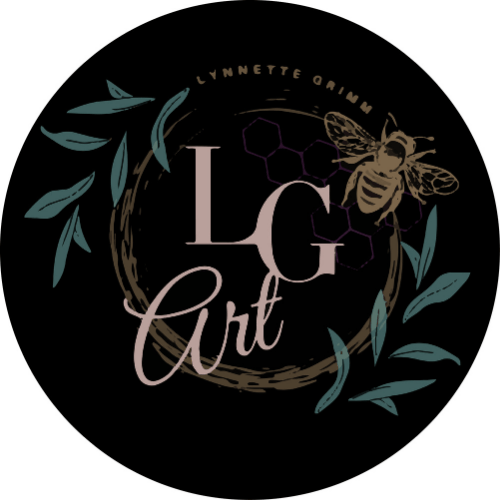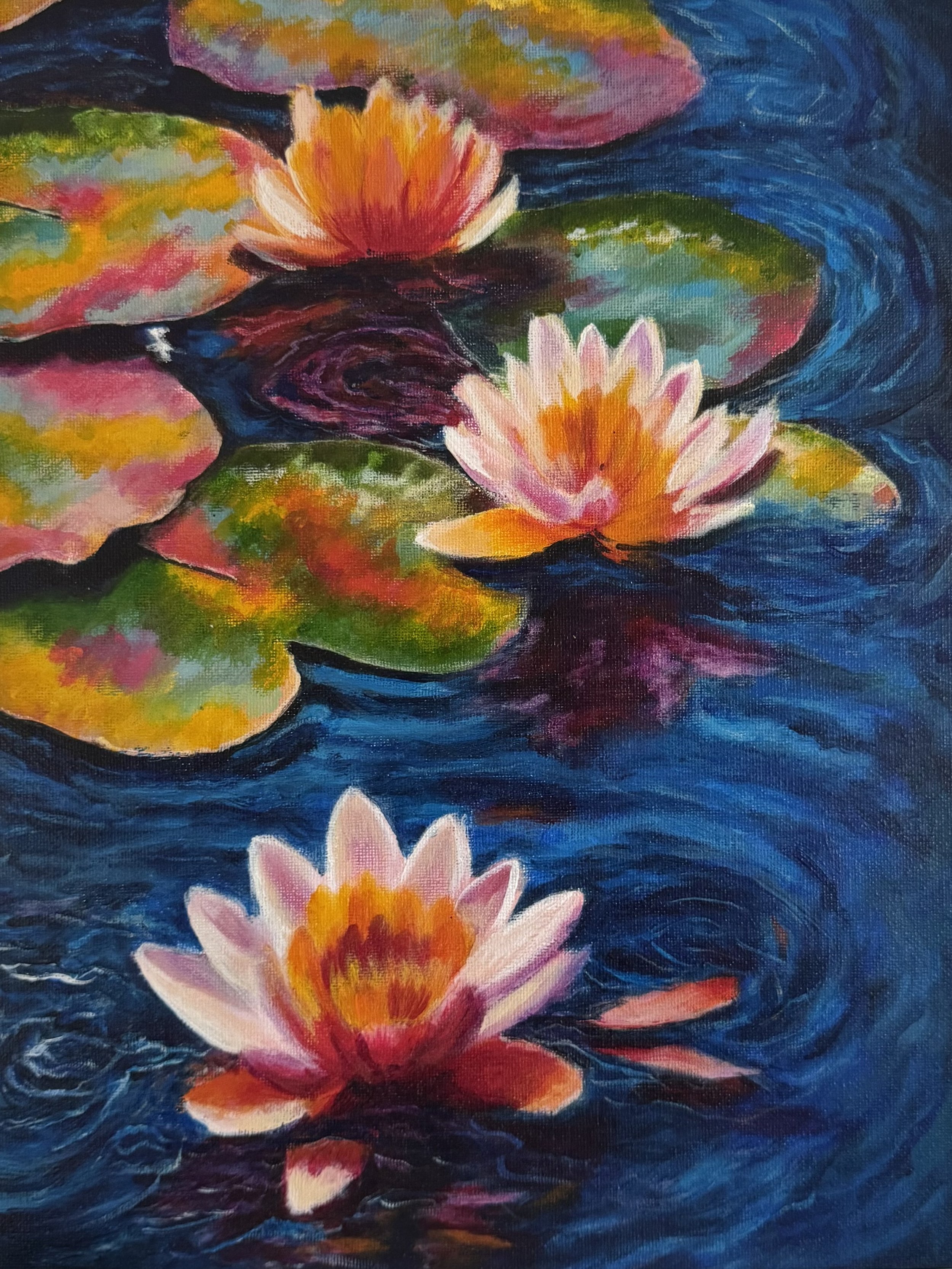Brushstrokes and Battle Cries: Why My Art Is a Protest
My art isn't just about beauty—it's about bearing witness. To the quiet unraveling of identity, to the resilience in decay, to the truth of what it means to inhabit a body that's been politicized simply for aging. I paint to reclaim space, to say the feminine experience is worthy, raw, complex, and powerful—even (especially) when it’s uncomfortable. This isn’t just art. It’s a protest—layered in color, shadow, and truth.
Art has always had something to say. Sometimes it's subtle, like a whisper that lingers. Other times, it’s more of a scream—a full-bodied, paint-splattered roar. I’ve found myself somewhere in between, using my work to speak to something deeply personal yet painfully universal: the feminine experience.
Now, before you picture me standing on a soapbox in a beret with a megaphone (not that it doesn’t sound fabulous), let me clarify. My art isn’t about shouting for the sake of noise. It’s about witnessing. It’s about capturing the quiet unraveling of identity that can come with aging, motherhood, and the slow decay of how society values the female body. It’s about challenging how that narrative gets written—and who gets to write it.
We live in a world where a woman’s body is regulated more than a poorly run HOA. Fertility is worshipped until it’s gone, and then suddenly we’re invisible. Menopause? Hysterectomy? Those words still make people squirm. But I’ve lived them. And instead of shrinking, I decided to paint.
Meditation, 2025
I paint peeling petals and overripe fruit. I paint cracked vessels and tangled blooms. I explore decay—but not as an ending. As a transformation. A shedding. A reclaiming. Because the feminine experience is not a linear path from maiden to mother to forgotten. It’s layered, complex, messy, and deeply, achingly beautiful.
And yes, my work is political. Because choosing to center stories that have been dismissed or overlooked is political. Choosing to say, “This matters. This body. This moment. This grief. This bloom.” That’s activism with a brush.
The Flourishing Reign of Femme (Close Up), 2025
Artists have always been mirrors and windows. We reflect, we reveal, we remind. And I don’t take that lightly. Every time I start a new piece, I think about what I want to say with it. Sometimes it’s soft. Sometimes it’s defiant. But it’s always honest.
Because for me, art isn’t just about beauty. It’s about truth. And truth—especially the kind that centers the voices of women, of queer folks, of those shoved to the margins—is a radical, revolutionary thing.
So if you’ve ever felt unseen, unvalued, or told that your story was too much, too weird, too emotional… same. That’s why I paint. That’s why I share. That’s why I’ll keep going.
Even if the world would rather look away.
Reframing Beauty: Feminism, Still Life, and the Art of Resistance
The hum of my projector fills the studio, casting fragmented shapes onto the blank canvas. I adjust the scale, shifting the composition—a peony unfolding beyond recognition, a wine glass teetering on an unseen edge, grapes swollen to impossible proportions. Sometimes I refine my vision in Procreate, arranging forms before committing to paint, but once my brush touches the canvas, the image begins to breathe on its own. I think about light and shadow, color and contrast—not just as visual elements, but as a language. What does it mean to illuminate? To obscure? To take up space? These choices are never just aesthetic; they are deeply intentional.
Feminism in art does not always arrive in neon protest signs. Sometimes, it blooms in the slow, deliberate act of refusing to shrink. The world teaches women to make themselves small, to be decorative, to be palatable. But my paintings challenge that expectation in subtle ways—in the scale of a flower that refuses to stay confined, in a table that tilts just enough to feel unstable, in objects that seem familiar yet are impossibly distorted. Still life has long been dismissed as a "feminine" art form, but what if still life is its own quiet rebellion?
Light is never neutral. It tells us what to admire, what to ignore, what to see. In my work, light bends and shadows loom, playing with perception—challenging the notion that beauty must be delicate, obedient, easily understood. What happens when beauty is unruly? When it overwhelms? When it refuses to be contained?
This is the quiet power of feminist art. It does not always scream. But it disrupts, unsettles, reclaims. It asks the viewer to pause, to reconsider, to see. And in that space of reconsideration, there is room for change.
The hum of my projector fills the studio, casting fragmented shapes onto the blank canvas. I adjust the composition—an iris twisting impossibly in its pose, a wine glass teetering on an unseen edge, grapes swollen beyond proportion, their weight undeniable. These objects should make sense, but they don’t. Their scale is off, their placement is unnatural, their presence demanding. Sometimes I refine my vision in Procreate (a really great tool for artists if you are unfamiliar), arranging elements before committing to paint. Other times, I let instinct take over, mapping out rough forms with light strokes, shifting and erasing until the canvas begins to breathe.
Then comes color. My mind cycles through color theory, perspective, light, and shadow, considering not only what will work visually, but what will work symbolically. What does it mean when something is bathed in light? What does it mean when it is pushed into darkness? These choices are never neutral. They dictate what is seen, what is dismissed, what is amplified.
My art is rooted in that tension—the way the world tells femmes, gender-expansive people, and other marginalized individuals to shrink, soften, disappear, while I insist on expansion, distortion, resistance.
Still Life as Subversion
Feminism in art is often expected to be loud, confrontational, direct. But subversion does not always arrive in neon protest signs. Sometimes, it blooms in the slow, deliberate act of refusing to shrink. Still life and botanicals—forms that have long been dismissed as decorative, domestic, passive—hold a quiet power. In my work, I take these elements and rearrange them, enlarge them, force them into a new conversation.
A table tilts unsteadily, threatening to spill. Flowers overtake the frame, breaking free from the space meant to contain them. Grapes—often associated with fertility, indulgence, pleasure—become overwhelming, their size asserting a presence that cannot be ignored. These objects push against the patriarchal notion that beauty must be small, compliant, and digestible.
Light is never just light. In my paintings, it bends unnaturally, casting highlights where they shouldn’t be, drawing attention to the unexpected. A glass of wine may glow while a once-prominent object fades into the background, a visual metaphor for the way power is distributed, who is centered, who is allowed to take up space.
Still life is a radical act when it refuses to conform.
Art as Resistance in a Time of Oppression
I turned 40 last year, and with each passing year, I see more clearly how the world seeks to erase femmes as we age—to strip away desirability, to render us invisible. It is an extension of the same system that polices our bodies, our choices, our autonomy. The weight of ongoing oppression—from the policing of reproductive rights to the targeting of trans and nonbinary communities—presses into every aspect of existence.
But we are still here. And we are still creating.
Art has always been resistance. It has always been a means of reclamation, of storytelling, of refusing erasure. The patriarchal standards imposed on us are the same ones that demand obedience and silence from all marginalized groups. But we are not silent.
The Power of Perspective: A New Way to See
Through art, I invite viewers—regardless of their personal beliefs—to look again. To see the world differently. To question what is “normal” and what is simply inherited bias.
If I scream, many will turn away. But if I present a table set with impossible objects, with fruit too large and light too unreal, they will pause. They will wonder. And in that space of reconsideration, there is room for change.
My art is an act of resistance, but also an act of invitation. A call to reconsider. A challenge to the notion that beauty must be small, soft, and compliant.
I paint to remind us that we can bloom wildly. That we do not have to shrink. That we can reshape the frame entirely.
And that is resistance.








